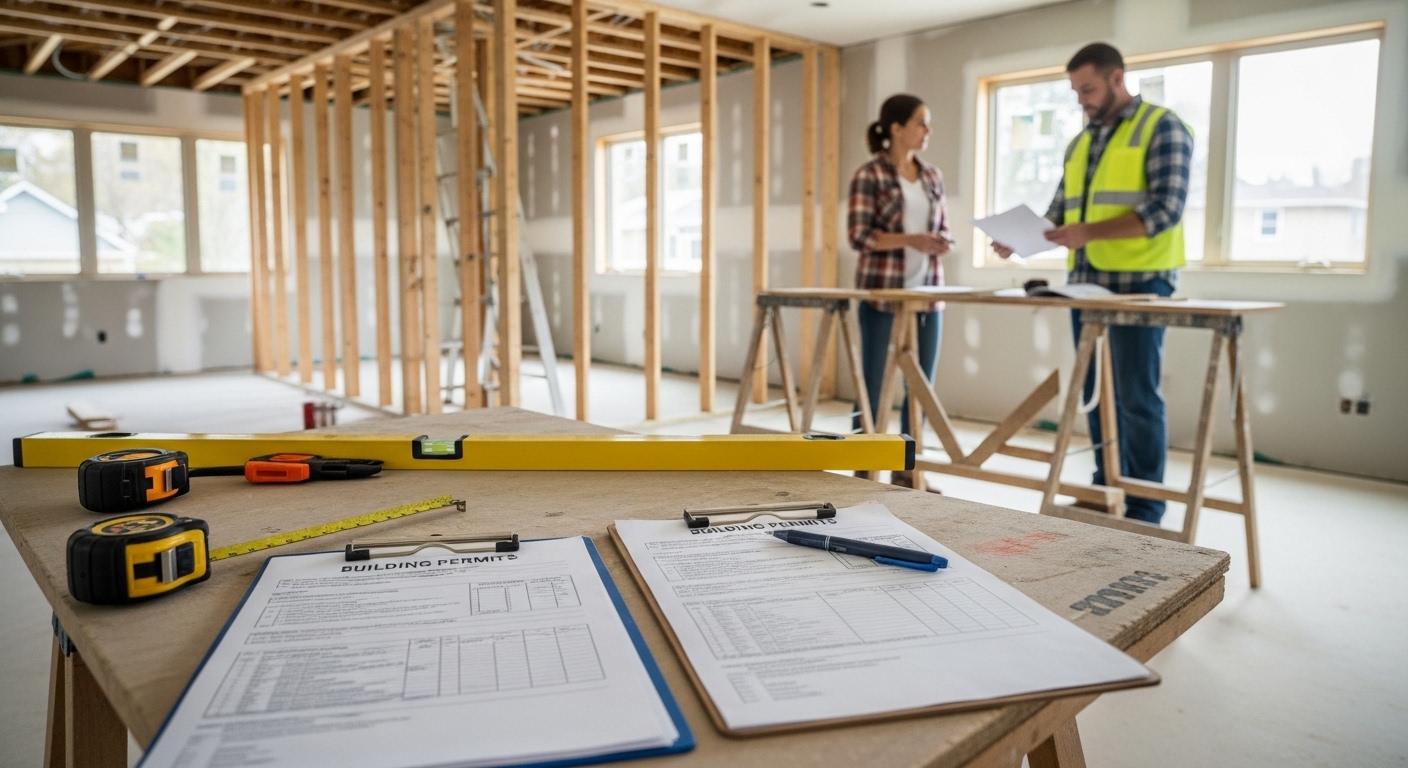Renovation Red Flags: What to Look for When Buying a Renovated Home, Addition, or New Build
Buying a home that’s been recently renovated, has an addition, or is brand new might sound like a dream. Everything’s fresh, modern, and move-in ready—what could go wrong? Well, sometimes a lot. Just because a home looks good on the surface doesn’t mean everything under the hood checks out. So, before you sign on the dotted line, here are a few things to watch for that could save you a major headache down the road.
Start With the Right Team
Before you even start falling in love with a listing, make sure you’re working with a solid realtor—someone who knows the market and has your back. But more importantly, your realtor should have a trusted contractor or builder they can loop in to assess the property. Having a contractor walk you through a renovation or new build is a game-changer. They’ll spot issues you might miss and give you a better idea of what you’re actually buying.
Ask for the Paperwork
If the home has been renovated, added to, or recently built, request documentation. Full stop. You want to see building permits, engineering reports, and architectural plans. If there was a designer involved, get their scope of work too. This ensures you have peace of mind that the job was completed properly and inspected along the way.
No paperwork? That’s a red flag. A nice-looking kitchen is great, but not if the plumbing was done by someone’s cousin who "watched a few YouTube videos."
Check for Proper Permits and Inspections
Any major renovation or addition should have gone through the proper permitting process. If permits weren’t pulled, you could be on the hook for issues that pop up later—and trust us, the city won’t care that you didn’t do the work. Make sure the seller can provide records of all relevant inspections, especially for structural, electrical, and plumbing work.
If you're unsure, this is where your contractor can step in and provide a more in-depth examination.
Know Your Warranty Coverage
If you’re buying a new build, check if the home is covered by a warranty program like Tarion (in Ontario). This provides a layer of protection if things start to fall apart after move-in. But even with a warranty, make sure the builder has a good rep. Not all builders are created equal, and not all warranty-covered work is easy to claim. Do your research.
Dig Into the Design and Build Team
Who designed the renovation? Who built it? These aren’t just bonus details—they tell you a lot about the quality of the work. A professional architect or interior designer brings thought and function into the layout. An experienced contractor or builder brings it to life the right way. When the right team is involved, the end result looks good and performs well.
If no one knows who did the work? That’s another red flag.
Trust Your Gut (and the Experts)
At the end of the day, if something feels off, it’s worth digging into. That backsplash might be trendy, but if the floor feels uneven or the walls aren’t square, it could point to bigger issues underneath. Don’t get swept up in surface-level upgrades without checking the bones of the place.
Bring in your contractor, ask the tough questions, and make sure the seller has answers. If they don’t? You’re better off walking.
Final Thoughts
Renovated homes, additions, and new builds can be great investments—but only if the work was done right. The key is doing your due diligence. Ask for documents. Bring in experts. And don’t be afraid to walk away if things don’t add up.
At Generation Construction, we know what good work looks like—and what to watch out for when it’s not. Whether you're buying, building, or renovating, we're here to help you make smart decisions every step of the way.
Contact us today to make sure your next home or renovation is built on solid ground.



